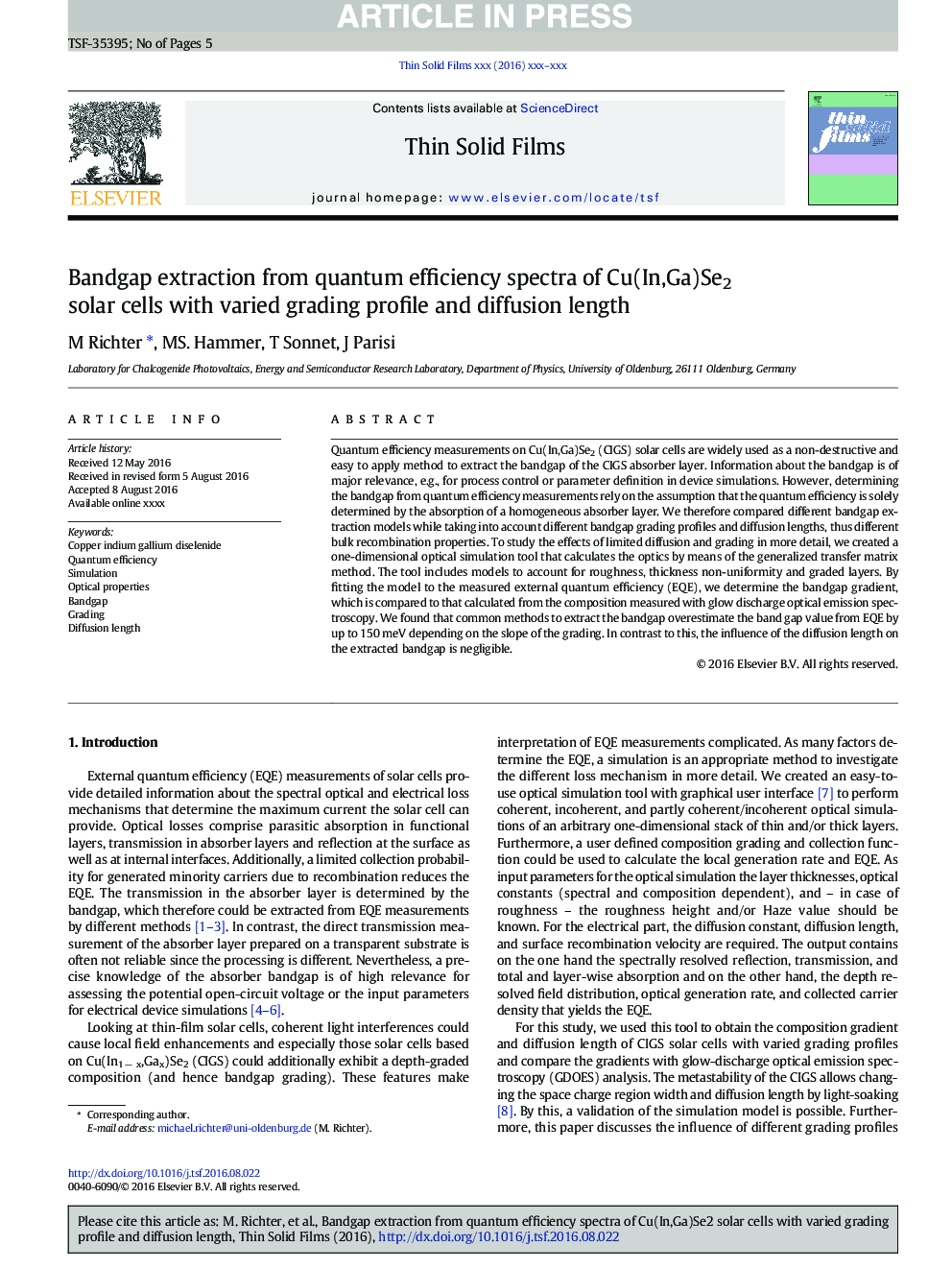| Article ID | Journal | Published Year | Pages | File Type |
|---|---|---|---|---|
| 5465948 | Thin Solid Films | 2017 | 5 Pages |
Abstract
Quantum efficiency measurements on Cu(In,Ga)Se2 (CIGS) solar cells are widely used as a non-destructive and easy to apply method to extract the bandgap of the CIGS absorber layer. Information about the bandgap is of major relevance, e.g., for process control or parameter definition in device simulations. However, determining the bandgap from quantum efficiency measurements rely on the assumption that the quantum efficiency is solely determined by the absorption of a homogeneous absorber layer. We therefore compared different bandgap extraction models while taking into account different bandgap grading profiles and diffusion lengths, thus different bulk recombination properties. To study the effects of limited diffusion and grading in more detail, we created a one-dimensional optical simulation tool that calculates the optics by means of the generalized transfer matrix method. The tool includes models to account for roughness, thickness non-uniformity and graded layers. By fitting the model to the measured external quantum efficiency (EQE), we determine the bandgap gradient, which is compared to that calculated from the composition measured with glow discharge optical emission spectroscopy. We found that common methods to extract the bandgap overestimate the band gap value from EQE by up to 150Â meV depending on the slope of the grading. In contrast to this, the influence of the diffusion length on the extracted bandgap is negligible.
Keywords
Related Topics
Physical Sciences and Engineering
Materials Science
Nanotechnology
Authors
M Richter, MS. Hammer, T Sonnet, J Parisi,
